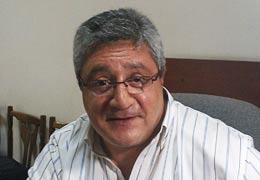


ArmInfo. "One cannot say that light industry in Armenia has died or is dying, but the fact that we have almost ruined the existing potential cannot be denied," Co-Chair of the Armenian Union of Employers of Light Industry, Tosp OJSC Director General Suren Bekirski said in an express interview with ArmInfo on the sidelines of the International Forum of Light Industry in Yerevan, when commenting on the current condition of light industry of Armenia. "Say nothing but good of the dead," he added.
Bekirski said that the tangible growth in light industry announced by the officials - particularly, the 32% rise in clothing production and 26% rise in production of footwear and leather goods - has quite a logical explanation - a step forward is 100% growth. As regards the 6% decline in textile production, Bekirski said that by textile one means the fabric production, which "died in Armenia in the early 1990s. So, we have almost lost that sector. Either we should rehabilitate it from scratch or we should give up on it," he said.
At the same time, the expert noted that some attempts to reactivate the sector are being made regardless of the state and its policy. He stressed that light industry implies a "light start-up". "As compared to other serious segments of industry that require serous capital investments - such as pharmacy, machine building, chemistry, light industry - may need 10 sewing machines to set up a small enterprise," Bekirski said, noting that the sector may rise to some level, but it is unlikely to rise to an international level.
The expert pointed out that tolling makes up an essential percentage in the clothing production. However, the activities of enterprises in light industry according to tolling schemes have their beginning and their end. Bekirski thinks that tolling implies a foreign market, a foreign model, a foreign construction and a foreign collection. The manufacturer invests almost everything in the production but does not become a market player. "Actually, you sell labor force, but you do not create your own brand or collection. You have no ideas or vision of your own development. If your customer leaves the market or refuses your services, you (having 10-15-year experience) remain face to face with the market and look into the eyes of your hungry employees. This is the dangerous part of tolling," he said. At the same time, the expert does not deny the positive side of tolling - as a rule, the entrepreneur works with well-developed companies and
learns a lot. "However, it is dangerous to constantly keep your production capacities on tolling," Bekirski said.
To note, according to the Armenian Ministry of Economic Development and Investments, light industry sector in Armenia increased significantly over the first 8 months of 2016: cloth production increased 32%, shoes and leather items - 26%. Textile production fell 6%. At the same time, export in the light industry sector increased 60%, with export of Armenian shoes alone growing 126%. Nevertheless, the production is exported mostly to Europe, which independent experts explain with the production in line with tolling schemes. In the meantime, the Ministry of says that the export of the Armenian light industry is re-orientating from European to Russian market.
According to the National Statistical Service of Armenia, in January-August 2016, the textile output totaled 280.1 mln AMD (down 5.4% versus Jan-Aug 2015). Clothing output grew by 32.7% to 7.3 AMD. Export of textile rose by 59% to $63.8 mln, leather and fur goods - 2.4-fold to $5.8 mln, footwear, headwear, umbrellas, canes - by 46.7% to $1.3 mln.
To recall, the development of the specified sector is a part of the export promotion concept adopted by the Armenian Government. The concept envisages development of 11 sectors of Armenian economy, with light industry being the 7th of them.